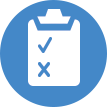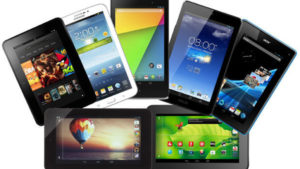You’ll swear we built it just for you.
- Pre–Sales, Route Accounting and Direct Store Delivery Models
- Seamless ERP Integration
- Industry Customizations
- “It’s easy to use, and great to know that an
order has been successfully received by the
ERP system in real time.” – Butterfield & Vallis
jLAN Mobile Sales includes hundreds of unique features, tools and customizations just for your industry.
- “jLan added the customizations we
needed to the solution to meet our needs,
ensuring that we could deliver on the service
that our customers expect.” – CIO of Distribution
- “jLAN was able to quickly modify its
existing lot tracking system to meet our needs,
thus greatly improving inventory visibility for
our road sales reps.” – Kent Flora, MIS, Thruway Fasteners
jLAN Mobile provides Route Accounting, Mobile
Sales, Direct Store Delivery and Proof of Delivery Software.
We help businesses empower their field sales teams so they can be
happy, productive and profitable while on the road.
Discover how we can help mobilize your success.
Request A Demo
Need a turnkey mobile sales, delivery and route accounting solution? jLAN Mobile has a solution you’ll swear we built just for you:
Our software makes pre-sales, route accounting and direct store delivery models easy to manage. Thanks to seamless integration with most ERP platforms, there won’t be any major adoption hurdles. Industry-specific customizations let you build out your software to suit your specific needs.
jLAN Mobile provides route accounting, mobile sales, direct store delivery and full-service sales software for field agents. Our first and only mission is to empower businesses and their field sales teams so they can remain agile, productive and, maybe most importantly, satisfied with the work they do.

Pre Sales
Pre-sales reps are always busy! They potentially make dozens of customer stops on a daily basis. jLAN Mobile lets your reps quickly meet customer demand and make more sales calls with real-time inventory visibility plus access to customer data and historical order information.
Your rep can book the order and send it back to your warehouse for processing before they’ve even left the customer’s location. That’s what efficiency looks like.
Direct Store Delivery (DSD)
Missed deliveries and misrouted shipments waste your time and money. Our direct store delivery software provides real-time delivery confirmation and several other valuable features, including signature capture, length of stop, GPS coordinates, account information and inventory tracking.
Each of these will help your company make speedier and more accurate deliveries.

Route Sales and Van Sales
You can create the perfect customer visit with jLAN Mobile. We can help you guide routed sales reps through important tasks to achieve the perfect customer visit. Build and plan daily stops days in advance if you like, for your total peace of mind.
We can help provide your drivers with important data at the point of customer contact. This information includes items like suggested selling quantities, historical sales data and real-time inventory information. Your truck or van stops can be more streamlined than ever with the right technology and insights on your side.
Proof of Delivery
jLAN records proof of delivery data on an iPhone so you can increase driver accountability and improve customer service .Deliveries are geo-tagged and date times stamped so you can eliminate delivery disputes with your customers.

Contact Us
jLan Mobile solution quick links
jLAN DSD Software (Direct Store Delivery)
Full Service
jLAN Mobile for Pre-sales Teams
jLAN Mobile Route Accounting Software
Feature updates
Why I chose jLan Mobile
Within a few months of implementing jLAN Mobile, the number of back orders dropped dramatically. That is more than $300,000 straight to the bottom line.
Francisco Villacian Graupera,







